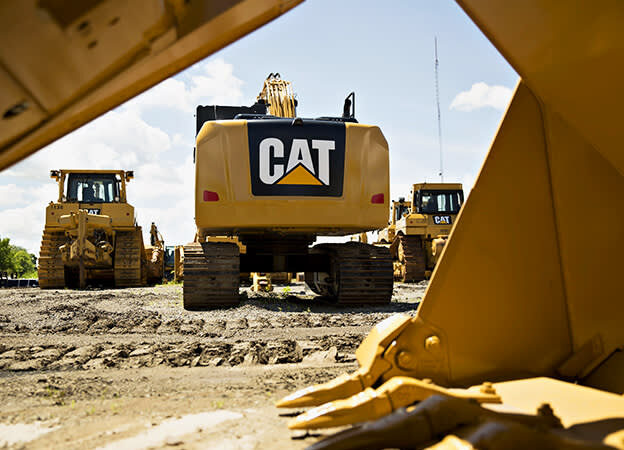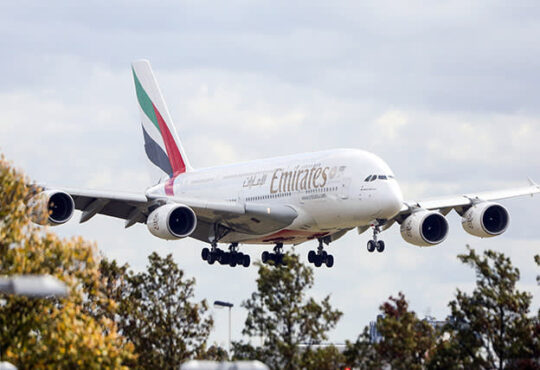
Caterpillar (US:CAT) is a deservedly iconic brand when it comes to moving large amounts of earth around in the shortest possible time. Indeed, the distinctive yellow and black branding finds its way onto clothing, footwear and children’s toys. In short, it is a company with a globally recognised presence, a heritage of strong research and development (R&D), products with consequently wide moats in terms of intellectual property, and access to a very large Stateside construction market.
With the shares currently hovering around the long-term average price/earnings (PE) ratio of 16, the company could be ready to boost its value in earnings terms if the infrastructure spending unlocked by the recent deal on the US debt ceiling translates into enough demand for the company’s earth-moving products. Complicating the picture is the question of whether spending by government agencies will ‘trickle down’ to individual companies and thereby positively affect their stock market valuations.
The other reason for investor interest is that Caterpillar is considered something of a bellwether share for institutions that hold large amounts of capital on behalf of retail investors. For example, market tracker specialist and fund manager Vanguard is the company’s biggest shareholder. If America’s revival in manufacturing and reshoring from overseas markets shows any tangible benefit, then Caterpillar should feel it.
However, while there could be a scenario where the company becomes more profitable, the interest rate picture means the shares might struggle to break out from their average price/earnings (PE) ratio as investors find alternative ways of earning a return.
Interest rates are the key
While great hopes are pinned on infrastructure spending benefiting various sectors, from manufacturing to basic materials, investors first need to understand how interest rates affect the flow of capital between the stock market and the bond market before placing bets on an all-out bull market in equities.
With the US base rate at 5.25 per cent and climbing, there seems to be a strengthening case that stock market performance owes more to government monetary policy than to what it spends. For example, academics Efrem Castelnuovo and Salvatore Nisticò reckon that interest rates and the stock market pricing of equities are both forward-looking in their expectations of future prices, so therefore have a natural relationship. Problems arise when interest rates reach a level that makes the bond market inherently more attractive than equities, as bond pricing will respond more readily to interest rate movements. In short, while there seem to be several complex interactions between interest rates and market prices, the higher interest rates climb, the lower the returns expected from equities – whether capital gains or income from dividends.
How does this affect cyclical companies such as Caterpillar? Much of the investment case rests on how much money the company earns from the latest round of government spending. Like most first-world countries, the US has an acknowledged problem with large parts of its public infrastructure and utilities, as several alarming bridge collapses over the past decade have illustrated to deadly effect.
Many states have roads, water pipes, bridges and other infrastructure that simply need huge upgrades. According to the $1.2tn “Infrastructure Investment & Jobs Act”, approximately $110bn is set aside for road and bridge rebuilding, $17bn for ports, and $55bn for water projects, amongst other areas. The list is impressive, but needs to be interpreted with nuance. For instance, while rebuilding bridges will create demand for new heavy lifting equipment, the same can’t be said for the $39bn that will be used to improve access to public transport, or the $7.5bn for building electric vehicle points. Interestingly, the total proportion of spending in different areas linked to construction projects would roughly match the percentage of revenues that Caterpillar generates from its different business segments; construction makes up 42 per cent of total revenues, for instance.
| CAT-US | ||||
| Company Details | Name | Mkt Cap | Price | 52-Wk Hi/Lo |
| Caterpillar Inc. (CAT) | $123bn | $237.90 | 26,604c / 16,060c | |
| Size/Debt | NAV per share* | Net Cash / Debt(-)* | Net Debt / Ebitda | Op Cash/ Ebitda |
| 3,083c | -$30.2bn | 2.6 x | 90% | |
| Valuation | Fwd PE (+12mths) | Fwd DY (+12mths) | FCF yld (+12mths) | CAPE |
| 13 | 2.1% | 6.6% | 28.0 | |
| Quality/ Growth | EBIT Margin | ROCE | 5yr Sales CAGR | 5yr EPS CAGR |
| 17.2% | 17.4% | 5.5% | 58.6% | |
| Forecasts/ Momentum | Fwd EPS grth NTM | Fwd EPS grth STM | 3-mth Mom | 3-mth Fwd EPS change% |
| -8% | 7% | 4.8% | 11.4% | |
| Year End 31 Dec | Sales ($bn) | Profit before tax ($bn) | EPS (c) | DPS (c) |
| 2020 | 41.7 | 4.2 | 656 | 408 |
| 2021 | 51.0 | 8.4 | 1,081 | 430 |
| 2022 | 59.4 | 8.7 | 1,384 | 461 |
| f’cst 2023 | 64.5 | 11.4 | 1,774 | 491 |
| f’cst 2024 | 65.5 | 11.5 | 1,823 | 524 |
| chg (%) | +2 | +1 | +3 | +7 |
| Source: FactSet, adjusted PTP and EPS figures | ||||
| NTM = Next Twelve Months | ||||
| STM = Second Twelve Months (i.e. one year from now) | ||||
| *Includes intangibles of $6.0bn or 1,173c per share | ||||
The other point to make clear is that rising rates mean projects will use more of their projected budgets to cover their finance costs, which is before the impact of cost inflation is taken into account, and may result in less work overall being completed in favour of sticking to agreed budgets and timelines. It also assumes that the contractors who own and operate Caterpillar equipment will be automatically willing, or able, to refinance new gear at a time when the cost is rising in step with interest rates.
Materials companies, by contrast, are not asking their customers to take on balance sheet risk as their products are expensed directly through the income statement as the core projects are finished. This is even before we get into debates over whether the worker shortages that afflict so many parts of the US economy abate enough to allow for extra capacity to build and complete the projected projects. This is where a closed-door immigration policy – so attractive to many populists in the US – starts to look less appealing in the context of economic growth.
Interest rates also have an important bearing on Caterpillar’s own debt servicing. Investors should be wary of the company’s approximately $31bn in net debt, once its cash pile of over $6bn is discounted. The company’s last 10Q quarterly filing with the Securities and Exchange Commission (SEC) showed that interest payments on this have risen by nearly 20 per cent to $129mn in the first quarter, which excludes the impact of its financial hedges. In the view of most analysts, that is currently too high and may lead management to prioritise capital allocation towards debt reduction rather than boosting investor payouts. The company itself forecasts that a moderation in input costs this year will come through in the second quarter and will help to turn an expected higher volume of sales into improved margins. Overall, that should offset some of the impact of the rise in interest rates. The return on capital employed is currently 14.5 per cent, roughly in line with what the average manufacturer currently achieves in the US.
Overall, no one accuses Caterpillar of not being one of the US’s highest-quality companies. R&D spending is not neglected and forms a major part of its appeal, while at the same time, it has a brand recognition that implicitly speaks to its reputation for turning out quality products. While brand awareness may give a boost to utility boot and clothing sales, what is uncertain is whether the company’s shares can decisively break out of their trading range.
The current NTM (next twelve months) PEG ratio of 0.9 suggests that value investors may have some latitude left when it comes to squeezing capital appreciation from the shares. However, it should be noted that this comes as supply chain worries for the company have subsided and the ratio returns quietly towards its growth-neutral average of 1. In the end, Caterpillar remains a deeply cyclical company that can only grow as quickly as the underlying market will allow and with a dividend yield of just 2 per cent, it will come as no surprise if investors decide that they can do better by simply putting their cash in the bank.






